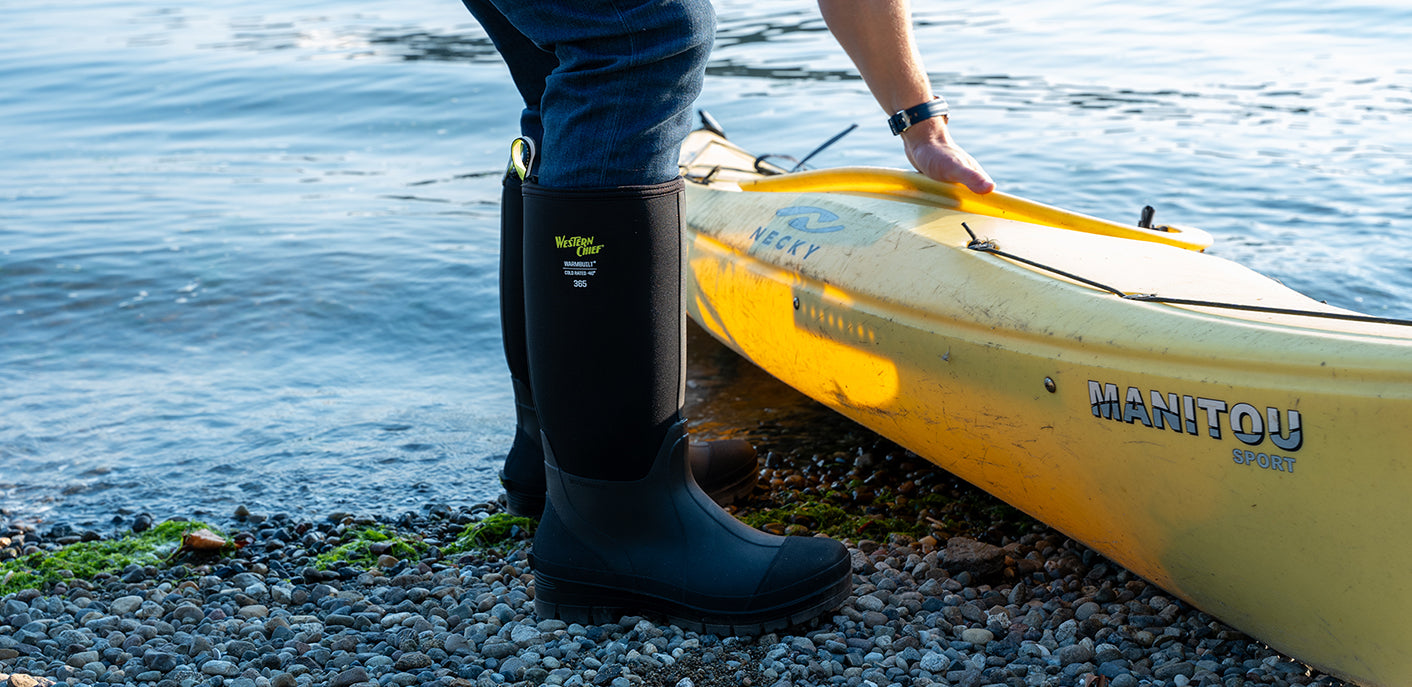
We are more than ready to welcome the coming of a new season. It’s been a long and gray winter, especially in the Pacific Northwest, and we are excited to welcome cherry blossoms, sunshine, and gardening!
Gardening is a rewarding and rejuvenating activity that anyone can do. We are fortunate to have a relationship with Swansons Nursery, a local Seattle nursery whose mission it is to foster a love for gardening among its Seattle neighbors and community. We regularly participate in Boot Planting events there but this time we made a special trip to learn some tips and tricks of gardening to share with you.
There are a few things you might find particularly helpful when starting your spring garden. Continue reading for Swansons advice on pruning, cleanup, setup for the season, amending soil and fertilizing, planting, and mulch!

Lena Curl, Marketing & Communications Team at Swansons
Pruning
Any time of year is a good time to remove dead, damaged, diseased, or deranged material (branches that cross or take off in weird directions). But this time of year is perfect as we prep for the new growing season.
The first job is to cut to the ground any remaining foliage on herbaceous perennials (those that die down each year). Herbaceous grasses can also be cut back now, before there is any danger of cutting off the tips of new blades.
Evergreen and semi-evergreen perennials, such as Penstemons, can be cut back now to just above the new growth that is starting near the base. Woody sub-shrubs such as Lavender, should also be cut back hard (but not into bare wood) to stimulate growth from near the base.
The goal when pruning woody deciduous shrubs is first to remove any dead or diseased material, then to remove branches rubbing on other branches, crossing over the center of the plant, or spoiling the shape of the plant. Doing so will open up the structure of the plants, direct their shape, and stimulate new growth.
Evergreen shrubs need less pruning, usually just to maintain a good shape. Early-flowering shrubs such as Camellias and Rhododendrons should not be pruned until after they have flowered.

Cleanup
Now is a great time to start weeding! If you’ve let your garden beds rest over winter, it’s likely you’re seeing a new carpeting of weeds that should be removed.
We just came out of a season with a lot of rain and we’re eager to dig in. However, you don’t want to get started too early because garden soil needs to dry out a little before we start working in it since working in saturated soil damages its structure. Ideally, the soil is moist, but not soggy, when you start amending and planting. You can test whether the soil is in good working condition by digging down 6-8”, and gathering a handful of soil that you gently squeeze into a ball with one hand. Allow the ball to drop onto the ground from a height of about 6”. If the ball breaks apart into crumbs, the soil is ready to work. If it stays as a ball or only slightly breaks apart, more drying time is helpful.
Amend the soil & fertilize
With areas free of weeds, you can more easily amend the soil and fertilize to raise the soil quality and add nutrients. You can add about 3”-4” of Soil Building Conditioner or compost and dig that into a depth of about 6”-12”.
G&B Organics Soil Building Conditioner is an ideal all-purpose soil amendment and mulch that will improve your soil no matter the type. The Soil Building Conditioner will improve sandy soil by adding organic material that will retain water more efficiently; it also helps break up hard compacted soils and improve drainage. We don’t have clay soil here in the PNW, we have glacial till. When you work in the Soil Building Conditioner, it breaks up compacted soils because it has shreds of composted bark that lay over each other like matchsticks, which helps open up spaces in the soil for oxygen and allows water to penetrate deeper. On the other end of the spectrum, Soil Building Conditioner can help provide structure for sandy or free-draining soils and help retain water at the root zone.
If you are growing vegetables, we recommend either compost or Farmyard Blend as an amendment because it is rich in blended manures.
You can also mix in fertilizer when you’re amending the soil for extra nutrients. Fertilizer is also great to add around your existing plants. After being cut back, plants go through a period of rapid growth so it is important to give them a source of nitrogen. Phosphorus is needed to promote flowering and root growth, and potassium is also important for general plant health.
Setup for the Season
If you have any décor, hardscaping features, trellises, drip hoses or irrigation to set up, now is a great time! It will be a lot easier to set up these supporting materials before you plant so you’re not risking damaging any new growth. It’s important to set up trellises and supports before planting so you don’t disturb young plants after they’ve already started growing.
Planting
Be mindful of the weather. Even though don’t usually experience hard freezes this time of year, it’s possible that we could through Mother’s Day, and that means tender plants will need protection.
You can start planting some seeds or starts at this time of year, though warm-season veggies need to be planted into the garden a little later in the season. Radishes, peas, kale, chard, broccoli, brassicas, arugula, lettuces, beets, and potatoes are all edible options you can plant right now.

Laying down mulch
Mulching is important because it reduces water loss from the soil, stabilizes the soil temperature, smothers annual weeds, and reduces the germination of weed seeds. Another benefit is the effect on the appearance of the garden. After the moving, dividing, and planting work of fall and spring, the soil surface is usually uneven. Mulch covers all this and will smooth out the surface.
Waiting until after new seeds have sprouted will be best. It’s important not to apply mulch right up to the crown or stem of the plant as this can cause rot. In practice, in a closely-planted garden, this means you can only apply a couple of inches of mulch. In a well-spaced shrub or tree planting, up to 4 inches can be used.
By Lena Curl

Every self-respecting gardener needs the appropriate footwear for weeding, tilling, and planting. Western Chief has you covered! Click here for our current clog and garden shoe collection.
Thank you to Swansons Nursery for providing all this wonderful information.





